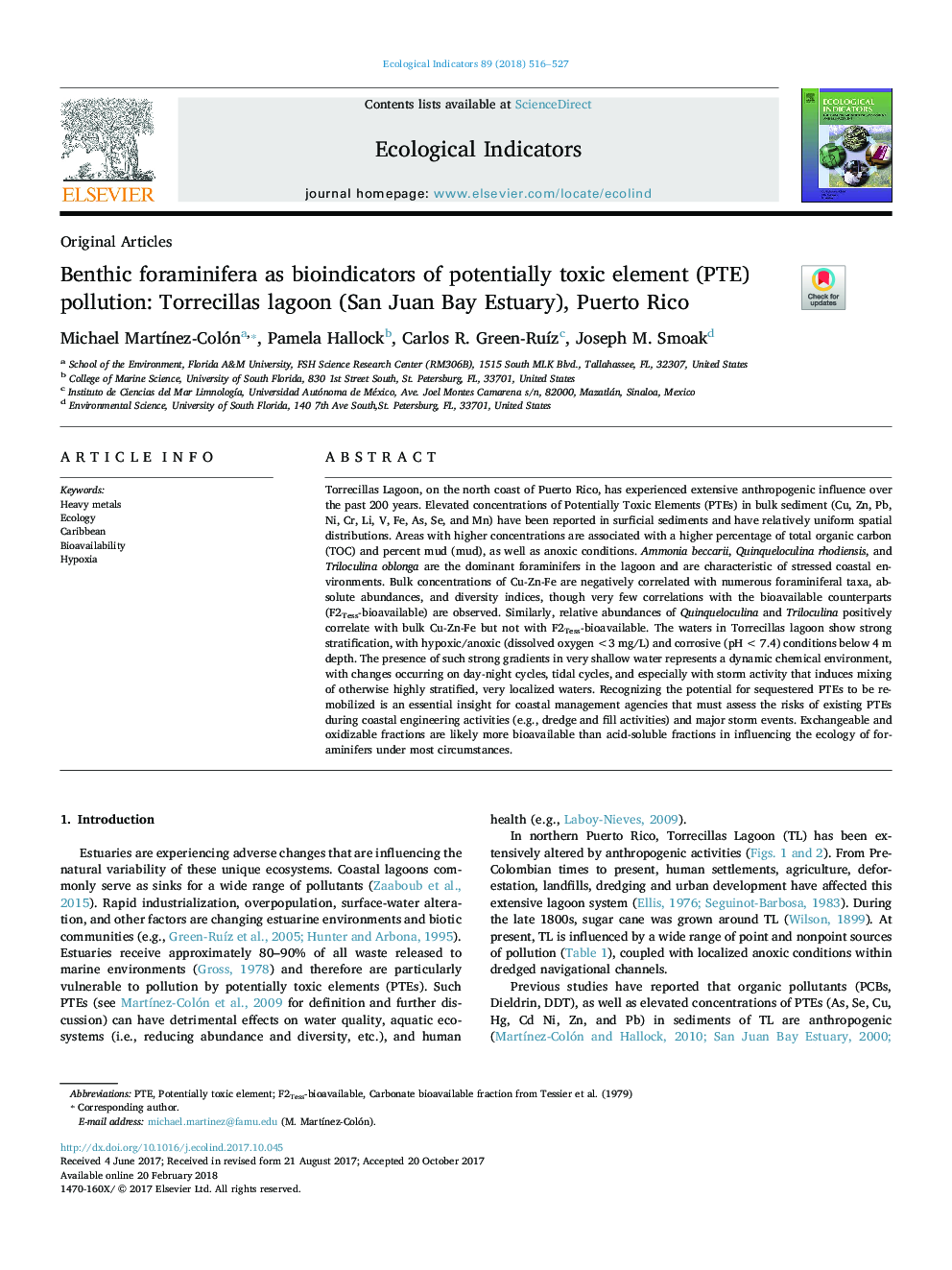| کد مقاله | کد نشریه | سال انتشار | مقاله انگلیسی | نسخه تمام متن |
|---|---|---|---|---|
| 8845498 | 1617113 | 2018 | 12 صفحه PDF | دانلود رایگان |
عنوان انگلیسی مقاله ISI
Benthic foraminifera as bioindicators of potentially toxic element (PTE) pollution: Torrecillas lagoon (San Juan Bay Estuary), Puerto Rico
دانلود مقاله + سفارش ترجمه
دانلود مقاله ISI انگلیسی
رایگان برای ایرانیان
کلمات کلیدی
موضوعات مرتبط
علوم زیستی و بیوفناوری
علوم کشاورزی و بیولوژیک
بوم شناسی، تکامل، رفتار و سامانه شناسی
پیش نمایش صفحه اول مقاله

چکیده انگلیسی
Torrecillas Lagoon, on the north coast of Puerto Rico, has experienced extensive anthropogenic influence over the past 200 years. Elevated concentrations of Potentially Toxic Elements (PTEs) in bulk sediment (Cu, Zn, Pb, Ni, Cr, Li, V, Fe, As, Se, and Mn) have been reported in surficial sediments and have relatively uniform spatial distributions. Areas with higher concentrations are associated with a higher percentage of total organic carbon (TOC) and percent mud (mud), as well as anoxic conditions. Ammonia beccarii, Quinqueloculina rhodiensis, and Triloculina oblonga are the dominant foraminifers in the lagoon and are characteristic of stressed coastal environments. Bulk concentrations of Cu-Zn-Fe are negatively correlated with numerous foraminiferal taxa, absolute abundances, and diversity indices, though very few correlations with the bioavailable counterparts (F2Tess-bioavailable) are observed. Similarly, relative abundances of Quinqueloculina and Triloculina positively correlate with bulk Cu-Zn-Fe but not with F2Tess-bioavailable. The waters in Torrecillas lagoon show strong stratification, with hypoxic/anoxic (dissolved oxygen <3Â mg/L) and corrosive (pHÂ <Â 7.4) conditions below 4Â m depth. The presence of such strong gradients in very shallow water represents a dynamic chemical environment, with changes occurring on day-night cycles, tidal cycles, and especially with storm activity that induces mixing of otherwise highly stratified, very localized waters. Recognizing the potential for sequestered PTEs to be remobilized is an essential insight for coastal management agencies that must assess the risks of existing PTEs during coastal engineering activities (e.g., dredge and fill activities) and major storm events. Exchangeable and oxidizable fractions are likely more bioavailable than acid-soluble fractions in influencing the ecology of foraminifers under most circumstances.
ناشر
Database: Elsevier - ScienceDirect (ساینس دایرکت)
Journal: Ecological Indicators - Volume 89, June 2018, Pages 516-527
Journal: Ecological Indicators - Volume 89, June 2018, Pages 516-527
نویسندگان
Michael MartÃnez-Colón, Pamela Hallock, Carlos R. Green-RuÃz, Joseph M. Smoak,